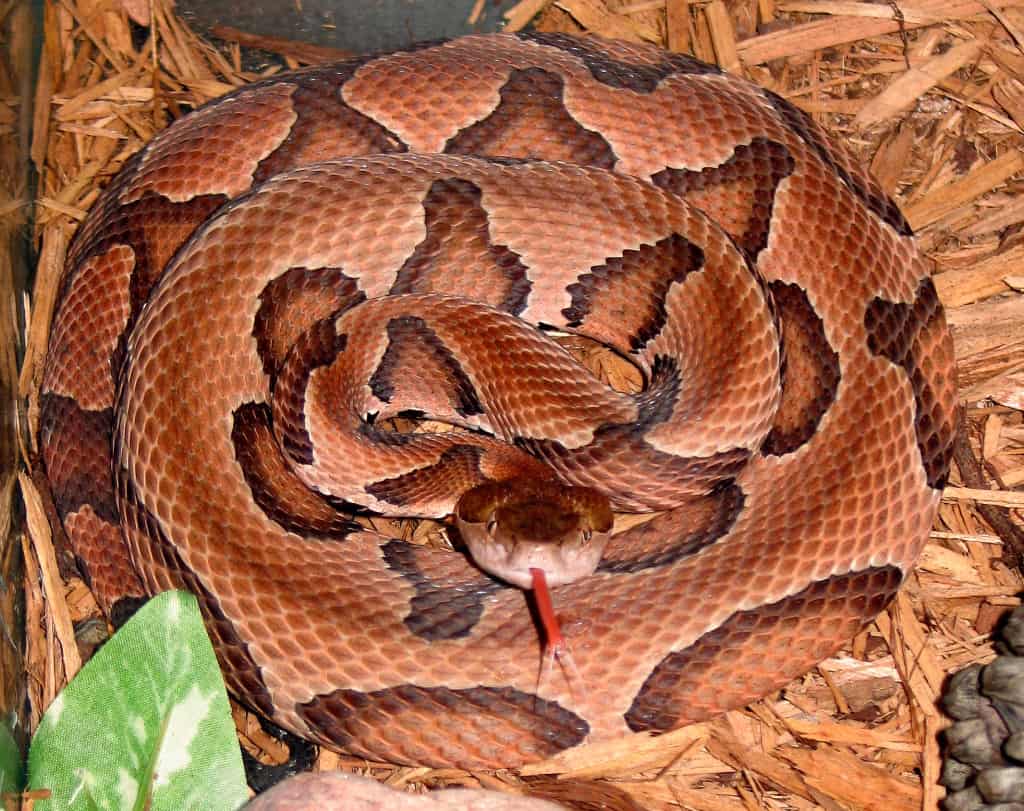A Parent’s Guide to Copperhead Snakes: Safety, Identification, and Peace of Mind
Hey there, super parents! Are you looking to brush up on your snake knowledge to ensure your family’s safety during outdoor adventures? Well, you’ve slithered into the right place! Today, we’re going to coil around the topic of the copperhead snake—a critter that often sparks curiosity and caution in equal measures.
Copperhead snakes may seem intimidating with their distinctive patterns and potential for a venomous bite, but fear not! With the right information and some helpful tips, you can confidently educate your kiddos about these serpentine creatures and know what to do if you cross paths. So, grab your adventurer’s hat, and let’s dive into the scaly world of the copperhead!
What You Need to Know About Copperhead Snakes
- Identification: Copperheads are medium-sized snakes with a beautifully distinct pattern that resembles the shape of an hourglass. They sport a combination of tan, brown, and sometimes pinkish tones, which allows them to blend seamlessly into their surroundings. Being able to identify this snake is key to avoiding any unnecessary encounters.
- Habitat: These snakes love wooded areas, but don’t be surprised to find them in suburban settings, too, as they are quite adaptable. They’re often spotted near rocks, woodpiles, or any place that serves as a good sunning spot or hiding place for their next meal.
- Safety Tips: We know as parents, your little one’s safety is your number one priority. When spending time in areas where copperheads may live, stay on well-traveled paths, wear closed-toe shoes, and keep an eye out for these cryptically colored creatures.
- First Aid Measures: In case of a bite, remain calm—it’s treatable! Keep the bitten area immobilized and below heart level if possible, and seek medical attention immediately. Remember, time is of the essence with any venomous snake bite.
Now that we’re cozy with the basics, let’s slither a bit deeper, shall we?
Identifying the Copperhead Snake: Look but Don’t Touch!
The key to avoiding trouble is knowing what you’re looking for. Copperhead snakes have some distinct features that set them apart from other snakes you might encounter.
- Unique Pattern: Those hourglass bands we mentioned? They’re wider on the sides and narrow on the back, making them a handy identification clue. But be cautious – young copperheads can be lighter in color and may lack the striking pattern of adults.
- Distinctive Head: Copperheads get their name from their copper-red heads. It’s not just for show; this coloration helps with camouflage and hunting.
- Size and Shape: Adult copperheads are typically 2 to 3 feet long. They have a heavy, muscular build, which can be quite startling if you’re not expecting it!
Understanding these physical characteristics will help you steer clear of the copperhead, promoting a safe encounter for both you and the snake.
Their Playground: Copperhead Habitats Uncovered
Copperhead snakes don’t stray far from home, and understanding their preferred habitats can help you anticipate potential meetings.
- Love for Leafy Lairs: They’re quite fond of deciduous forests filled with fallen leaves and rotting logs – the perfect camouflage! So, if you’re out leaf-peeping with the fam, keep those peepers peeled for these sneaky serpents.
- Rocky Retreats: Rocks and other crevices offer excellent basking spots and protection. When hiking, remind the kiddos not to reach into or step over places they can’t see clearly.
- Suburban Surprises: Yes, copperheads can be suburbanites, too! They may visit your backyard, especially if it’s close to natural areas. Maintaining a tidy yard and being vigilant about checking for unexpected visitors can prevent any surprise encounters.
With a good grasp of where copperheads hang out, you can better prepare your family for nature walks and outdoor play without the worry of an uninvited slithering guest.
Alright, amazing adventure seekers, that wraps up the first segment of our in-depth exploration of the copperhead snake! Remember, knowledge is power, especially when it comes to these misunderstood critters. In our next segment, we’ll cover the importance of safety in detail, including best practices for preventing bites and what steps to take if you encounter a copperhead. Stay tuned, stay informed, and most importantly, stay safe as you enjoy your outdoor escapades with those you cherish most!

Five Things Parents Should Know When Preparing for Copperhead Snakes
1. Prevention is Key
Before venturing out into areas where copperhead snakes might be lurking, have a chat with your children about snake safety. Teach them the importance of staying on clear paths, avoiding tall grass, and not picking up or touching any snakes or other wildlife. It might be fun to turn this into a game – who can spot the safest path or keep an eye out for potential snake hideouts?
2. Dress for Success
Equip your family with the proper attire for outdoor adventures in snake country. Long pants and boots can provide an extra layer of protection against bites. It’s a good idea to dress in light-colored clothing as well, as it makes it easier to spot any hitchhiking ticks or other critters.
3. Know the Time and Place
Copperhead snakes are most active in the evening and at night, so plan your family outings for daytime hours when visibility is better. Also, understanding that copperheads are typically more active during the warmer months can help you decide when and where to hike, camp, or play.
4. First Aid Familiarity
Have a well-equipped first aid kit and know how to use it. Teach everyone in the family basic first aid, including how to immobilize a limb and apply a clean dressing. This knowledge isn’t just valuable for snake bites; it’s helpful for any outdoor injury.
5. Local Wildlife Resources
Be aware of local wildlife hotlines or ranger stations. Knowing who to call for advice or assistance in the event of a snake encounter can offer peace of mind. Familiarizing yourself with the nearest medical facilities that can treat snakebites is also prudent.
By keeping these key points in mind and preparing accordingly, you can decrease the likelihood of a dangerous encounter with a copperhead snake. Emphasize respect for nature and wildlife while also assuring your children that with the proper precautions, the risk can be minimized, ensuring fun and safe family outings. Now get ready to explore the great outdoors with confidence and a sense of adventure!
For more great fun click here. For more information see here
Disclaimer
The articles available via our website provide general information only and we strongly urge readers to exercise caution and conduct their own thorough research and fact-checking. The information presented should not be taken as absolute truth, and, to the maximum extent permitted by law, we will not be held liable for any inaccuracies or errors in the content. It is essential for individuals to independently verify and validate the information before making any decisions or taking any actions based on the articles.




